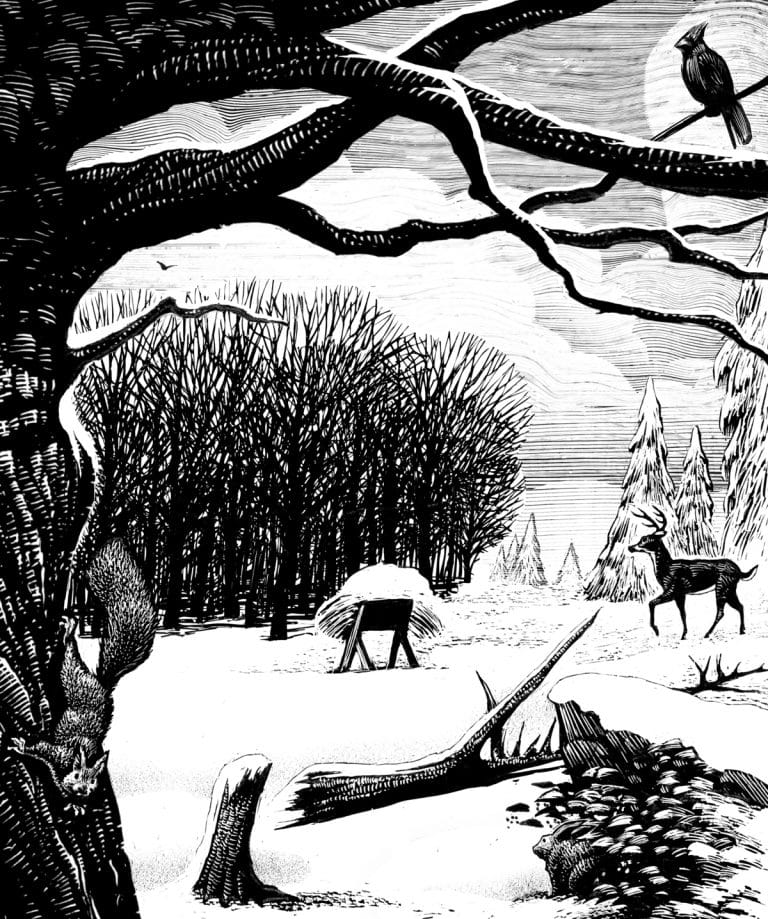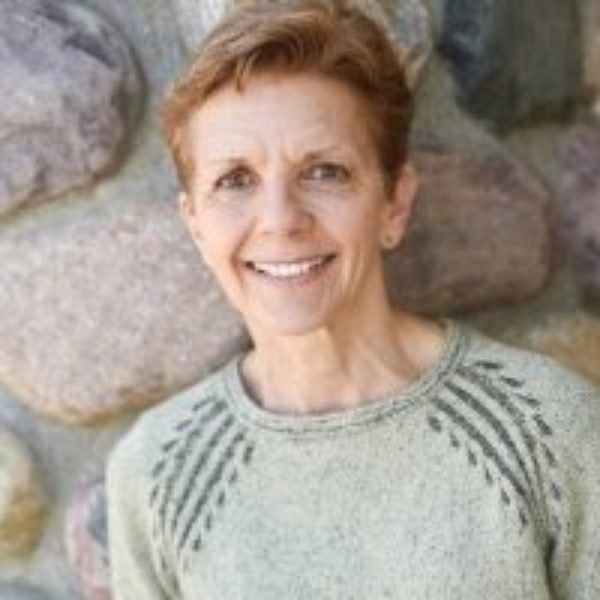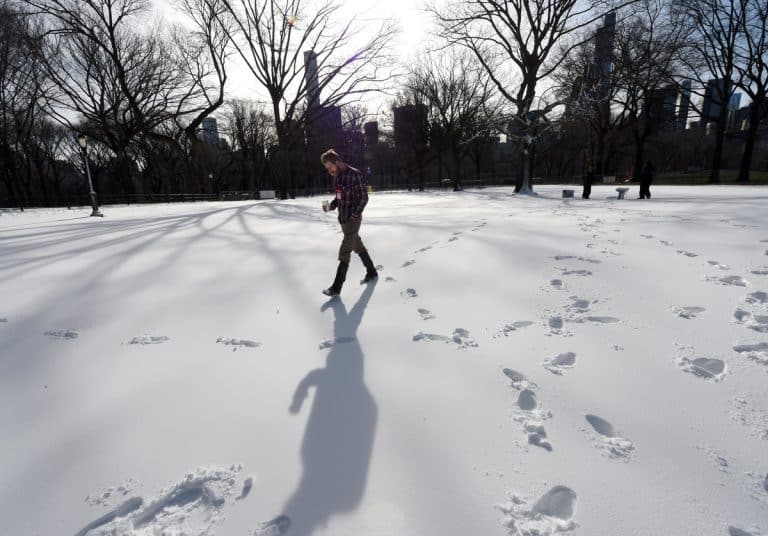
Image by David G. Klein, © All Rights Reserved.
All Creation Waits
“Every single creature is full of God and is a book about God. Every creature is a word of God. If I spend enough time with the tiniest creature, even a caterpillar, I would never have to prepare a sermon. So full of God is every creature.”
When our first son was a toddler I wanted to add an Advent calendar to our family’s Advent practices. Before his birth we had already begun to take back late November and December from “the holiday season,” doing a few things that, though very simple, startled family and friends. We’d given up colored lights and Christmas decorations for four candles on an Advent wreath, only putting the decorations up, with the tree, on Christmas Eve. We waited until then, too, to sing or play or listen to Christmas carols, keeping quiet except to sing “O Come, O Come Emmanuel” each evening around the lit wreath. Now and then someone dared to ask us why our home was so un-Christmasy. More people asked more pointedly after our son was born — as if we were denying him some essential of childhood.
We decided to strip down and step back after I read a few paragraphs in a rather dry tome on the history of Christian liturgy. Those paragraphs worked in me like fingers lining up the cylinders of a lock. I still remember the click when that internal lock popped open.
I learned that the roots of Advent run deep beneath the Christian Church — in the earth and its seasons. Late autumn, in the northern hemisphere, brings the end of the growing season. When early agricultural peoples had harvested their crops and stacked food in their larders, they gave a collective sigh of relief. Their long days in the fields were over. For their labor they had heaps of fruits, vegetables, grains, and meat. The group body called out, Feast!
At the same time, no matter how glad the party, they couldn’t keep from glancing at the sky. Their growing season was over because the sun had retreated too far south to keep the crops alive. Each day throughout the fall they watched the light dwindle, felt the warmth weaken. It made them anxious, edgy. Their fires were no substitute for the sun. When they had eaten up the crop they were feasting on, how would another crop grow? Throughout December, as the sun sank and sank to its lowest point on their horizon, they felt the shadow of primal fear — fear for survival — crouching over them. They were feasting, and they were fearful, both. Yes, last year the sun had returned to their sky. But what if, this year, it didn’t? Despite their collective memory, people wedded, bodily, to the earth couldn’t help asking the question. Their bodies, in the present tense, asked the question.
Our bodies still ask that question. In December the dark and cold deepen, and our rational minds dismiss it as nothing. We know that on December 21, the winter solstice, the sun will begin its return to our sky. But our animal bodies react with dis-ease. We feel, The light — life — is going. Those particularly afflicted know themselves as SAD — Seasonal Affective Disorder — sufferers. Some of us cope by seizing distractions the marketplace gleefully offers: shopping, parties, more shopping.
To be sure, some part of “the holiday season” is celebration of the harvest, for us, as it was for our ancestors, even if our personal harvest doesn’t involve crops and barns. We throw a party to mark the end of another year and all it’s brought. We do this in a big, bright, loud way. But for us also, as for our ancestors, the dark end of the year brings unrest. It is an end. It comes without our asking and makes plain how little of life’s course we control. This uncertainty, we don’t know how to mark. And so it marks us. We feel weighted, gloomy even, and we feel guilty because voices everywhere in myriad ways sing out, “It’s the Most Wonderful Time of the Year.”
The Church history book that got hold of me told me that my own annual December sadness was no reason for guilt. It was a sign of being wide awake in the world, awake enough to sense loss. And furthermore, there was a way to engage that sadness. That way was Advent.
The early Fathers of the Christian Church read the ebbing of light and heat and vegetable life each year as a foreshadowing of the time when life as we know it will end completely. That it will end is the rock-bottom truth we sense deep in our primal bones every December, and it rightly terrifies us. To their and our abiding fear of a dark ending, the Church spoke of an adventus: a coming. Faith proclaimed, When life as we know it goes, this year and at the end of all years, One comes, and comes bringing a new beginning.
Advent, to the Church Fathers, was the right naming of the season when light and life are fading. They urged the faithful to set aside four weeks to fast, give, and pray — all ways to strip down, to let the bared soul recall what it knows beneath its fear of the dark, to know what Jesus called “the one thing necessary”: that there is One who is the source of all life, One who comes to be with us and in us, even, especially, in darkness and death. One who brings a new beginning.
This is Christian tradition at its best, moving in step with creation. When the sun’s light and heat wane, the natural world lets lushness fall away. It strips down. All energy is directed to the essentials that ensure survival. Engaging in Advent’s stripping practices — fasting, giving away, praying — we tune into the rhythms humming in the cells of all creatures living in the northern hemisphere. We tune into our own essential rhythms.
So when I wanted to add an Advent calendar to our practice, I looked for one that would, like fasting, giving away, and praying, help us enjoin earth’s seasonal rhythm. The ones at Christian bookstores featured a thumbnail-sized cast of the Nativity behind the daily doors. Better than pictures of candy canes and gift packages. But I was looking for daily miniatures that were less about Christ’s human birth and more about the need for that birth. I wanted my little boy, opening each door, to sense that Advent is about darkness — and hope, fear — and hope, loss — and hope.
Pregnant with my second child, I set about making an Advent calendar. The pictures I found myself drawing behind the little cut-out doors were of creatures. Behind door number one, a turtle at the bottom of a pond. Behind door number two, a diamond-skinned snake. Then a loon, a wild goose, a bear, a doe, a crow … As a companion to the calendar I made a little book. Each December day after Kai opened a door, I read a bit of a poem or song or natural history that linked the creature behind that door to the heart of Advent:
“Turtle is buried now in mud at the bottom of the pond. Encased in darkness, she is utterly still. She waits…”
I drew a turtle behind the door of December 1 because, days before, my son’s godmother had sent me her meditation on turtle as a symbol of the soul in its dark season. And because I knew my son, like all children, liked pictures of animals.

That was more than twenty Advents ago. Both boys still come home some days in Advent. We still open a calendar door and read about the animal for that day. They still want me to ask the only question I’ve ever asked at the end of the reading: Why do we have a turtle on our Advent calendar? Why a bear? Why a loon?
Looking at the animal portraits year after year shows us how a healthy soul responds to encroaching darkness. And there’s more than one response. There’s the turtle response, the loon response, black bear’s response … When that primal fear of the dark — of the end — begins to slide over us, animals unselfconsciously and forthrightly offer unfearful responses. They take in the threat of dark and cold, and they adapt in amazing and ingenious ways. They shape themselves to life as it is given.
All 24 animal portraits enact heart and soul realities for us. Each in its way says: The dark is not an end, but a door. This is the way a new beginning comes.
The practice of Advent has always been about helping us to grasp the mystery of a new beginning out of what looks like death. Other-than-human creatures — sprung, like us, from the Source of Life — manifest this mystery without question or doubt. The more I’m with animals and the more I learn about them, the more I know they can be more than our companions on this planet. They can be our guides. They can be to us “a book about God… a word of God,” the God who comes, even in the darkest season, to bring us a new beginning.

